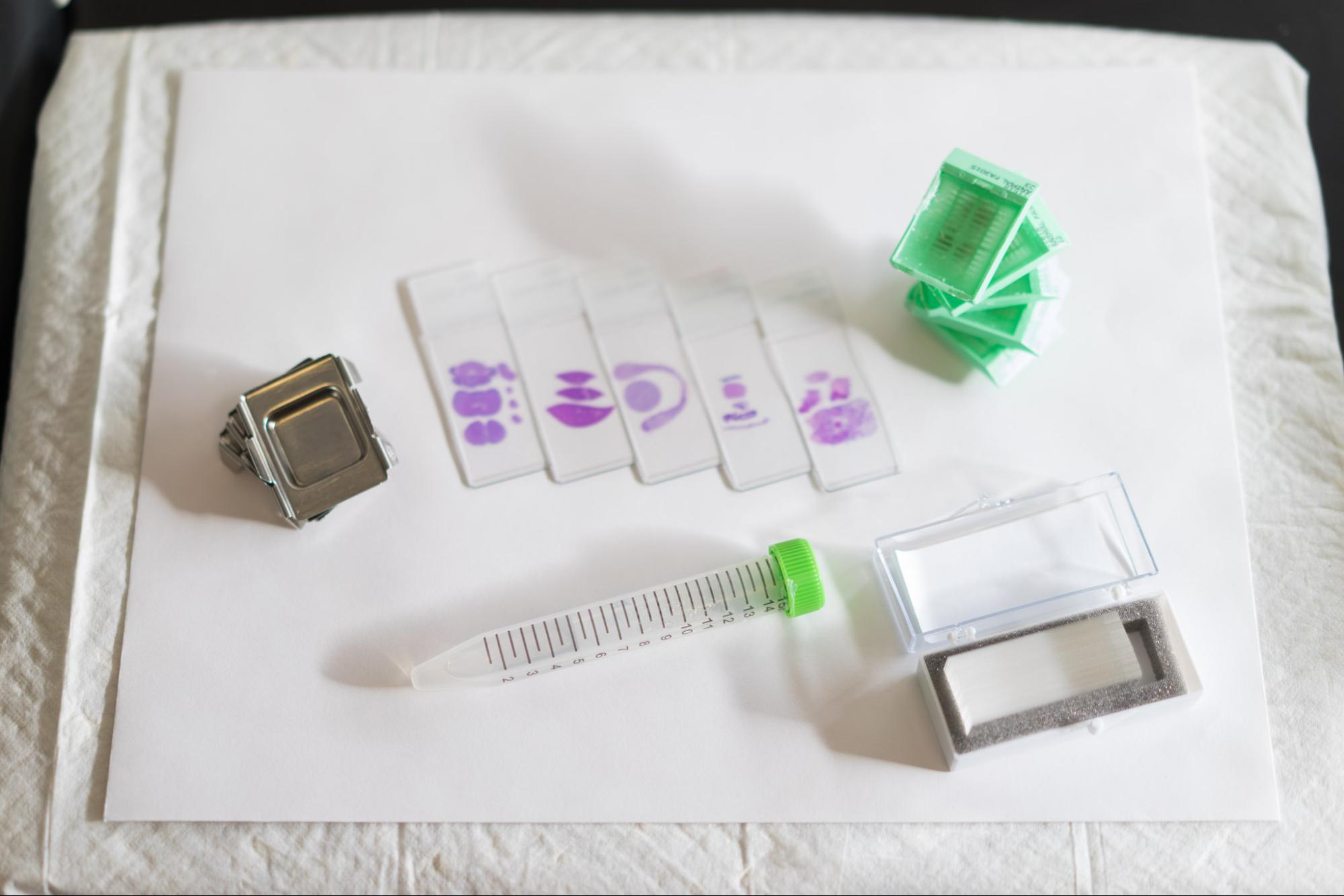Conclusions drawn from analysis of preclinical histology provide the cornerstone for planning future studies and clinical decision-making down the line. Whether utilizing classic stains and dyes or more specialized immunological and molecular techniques, it is of utmost importance that the histotechnologist provide quality, consistent results. Reliable, high-quality slides allow for the most accurate assessment of pathologically relevant changes in the tissue.
Below we describe some tips to help ensure that your histology is consistent and is of the highest quality possible. Both the proficiency of the personnel and the quality of the samples will have an enormous impact on your timeline and budget.
Ensure personnel have appropriate training and expertise
Properly trained and experienced technicians are an absolute must to ensure consistency in the handling and processing of tissues. There is no substitute for expert staff when it comes to the highly skilled and detail-oriented work of a histology laboratory technician.
Training across various areas of histological preparation is essential to ensure that technicians are skilled and aware of the implications of each step in the process. For example, all histology technicians embedding all tissues in the same orientation will lead to more consistent cuts on the microtome, which will provide the most consistent and crisp staining. Only technicians who have experience with each of these steps will be able to fully appreciate and execute these procedures with the adequate care and attention to detail necessary.
Proper training of all personnel will ultimately lead to consistency between laboratory technicians, which is essential in the histotechnology laboratory. Ideally, it will not be possible to determine later, which technician processed which samples. From tissue trimming; to embedding, microtoming and staining; technicians must use skill and attention to carefully follow established procedures.
Handle tissues with care at each step
The condition of your starting material determines the end result of your histology. An expert staff will ensure that samples are handled with attention and care to avoid damage at each step in the processing. For example, during necropsy it is important to avoid damage. Some ways to avoid damage are:
- Using skilled prosectors to procure the tissues
- Proper technique of tissue removal
- Proper fixation of tissues at time of necropsy
At the processing, embedding and microtomy stage, careful handling of the tissue remains a priority. Here, it becomes imperative to avoid:
- Over or under processed tissues
- Excessive heat of paraffin
- Wrinkles in tissue sections due to excessive water bath temperature
- Sections rupturing in an overheated water bath
- Knife lines or tears in tissues because microtomy blade is overused
The utmost care must be taken during microscopic quality control. The following is a list of reminders for histotechnicians at this step:
- All tissues are viewed microscopically to ensure quality sections
- Recut/Retrim/Re-embed tissues/blocks when necessary
- Ensure tissues are placed consistently on the microscope slides
- Labels should be easy to read
Use the highest quality reagents
The best results will come from using the highest quality reagents for processing and staining samples. Changing reagents frequently and cleaning machines regularly will help avoid contamination and dilution and will ultimately produce the most reliable histology. Using high quality paraffin and the appropriate molds for embedding samples is the key for easy and consistent cutting. Superior blades must also be employed to support accurate microtomy. Finally, to optimize your staining protocol, it is essential to:
- Consider the quality of the staining reagents
- Always use fresh solutions
- Store reagents properly
- Monitor oxidation (e.g., hematoxylin)
- Replace reagents regularly
Comply with Good Laboratory Practices (GLPs)
Whenever dictated by study protocol, studies should be conducted in adherence to the FDA’s section 21 CFR, Part 58, Good Laboratory Practice for Non-Clinical Laboratory Studies. The benefit of GLPs is that results will be consistent, reproducible and well-documented. Having an on-site Quality Assurance Unit is key to maintaining a histology laboratories GLP program.
Annual facility inspections, vendor audits, SOP review/revisions and personnel training records are all necessary for maintaining GLP compliance. Following these practices will generate data of the highest quality and validity, which ensures the fastest, most cost-effective path to advancing your test article or compound through to clinical trials.

